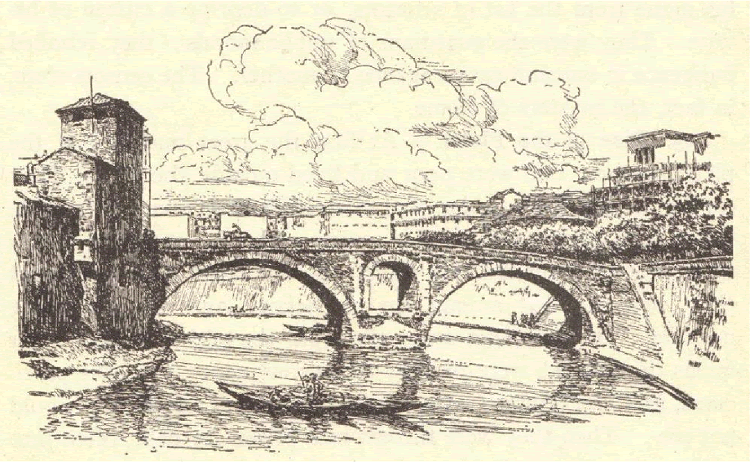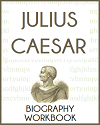| Fabrician Bridge over the Tiber |
|---|
| www.studenthandouts.com ↣ World History ↣ Ancient Rome ↣ Ancient Rome Maps & Pictures |
 |
|
Fabrician Bridge over the Tiber River: The first bridge across the Tiber at Rome, built of wood, was the one defended by Horatius. Many bridges were built later, but the Fabrician, which unites the city with an island in the Tiber, is the oldest stone bridge in the world still in use. Click here to enlarge.
The Fabrician Bridge, also known as the Pons Fabricius, is an ancient Roman bridge in Rome, Italy, spanning the Tiber River. It is one of the oldest bridges in the city and is renowned for its well-preserved state. Construction Date: The Fabrician Bridge was constructed in 62 B.C.E. by Lucius Fabricius, a high-ranking Roman official who held the position of curator of the roads in ancient Rome. Location: The bridge is situated in the heart of Rome, connecting the Tiber Island (Isola Tiberina) to the Campus Martius on the right bank of the Tiber River. Design: The Fabrician Bridge is a stone bridge with a series of arches, and it features a distinctive and elegant design that combines practicality with aesthetics. It is notable for its well-preserved appearance, making it a remarkable testament to Roman engineering. Function: The bridge served as a vital transportation link, facilitating the movement of people and goods between the Tiber Island and the rest of the city. It was an important part of the Roman road network. Material: The bridge was constructed using stone and tuff, a volcanic rock, which contributed to its enduring quality. Architectural Features: The Fabrician Bridge is composed of two main arches, one smaller arch on the left bank, and a smaller stone bridge that connects to the Tiber Island. The larger central arch has a span of approximately 18 meters (59 feet), while the smaller arches have spans of about 7 meters (23 feet). Inscriptions: The bridge features inscriptions commemorating its construction by Lucius Fabricius, which is a rare feature among ancient Roman bridges. Historical Significance: The Fabrician Bridge is not only a functional structure but also an important historical and cultural symbol, representing the enduring architectural and engineering prowess of ancient Rome. Continued Use: Remarkably, the Fabrician Bridge remains in use for pedestrians and vehicles today, and it still connects the Tiber Island with the surrounding neighborhoods in modern Rome. Its continued functionality is a testament to the durability of Roman engineering. The Fabrician Bridge is an impressive example of Roman bridge construction, and its enduring presence on the Tiber River serves as a link between the ancient world and modern-day Rome. It stands as a tangible reminder of the ingenuity and craftsmanship of the Romans in the field of civil engineering. |
 |  |  |  |  |  |
| Ancient Rome Books and Films | Ancient Rome Outlines and PowerPoints |
| Ancient Rome Maps and Pictures | Ancient Rome Study Games |
| Ancient Rome Miscellany | Ancient Rome Worksheets |
| www.studenthandouts.com ↣ World History ↣ Ancient Rome ↣ Ancient Rome Maps & Pictures |








